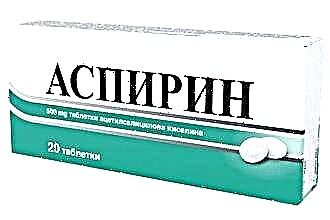From the earliest times to the present day, people have been using alternative cold remedies that are as effective as traditional medicines. In particular, we are talking about irrigation of the sinuses with saline. This does not mean that you need to give up the usual drugs. But you should not ignore the effective methods of treatment that have been proven for centuries. Moreover, folk remedial methods usually do not require special material costs and the application of physical strength.
Application
 If we briefly talk about saline solutions used in medicine, then isotonic solution, hypertonic and hypotonic, is used. They differ in the amount of active substance and are used for different purposes. Its composition is the same salt water, so cooking it at home will not pose any problems. In our case, an isotonic 0.9% solution is required. For colds, it is used not only to cleanse the nose, but also as inhalations, rubdowns, baths as auxiliary therapeutic agents.
If we briefly talk about saline solutions used in medicine, then isotonic solution, hypertonic and hypotonic, is used. They differ in the amount of active substance and are used for different purposes. Its composition is the same salt water, so cooking it at home will not pose any problems. In our case, an isotonic 0.9% solution is required. For colds, it is used not only to cleanse the nose, but also as inhalations, rubdowns, baths as auxiliary therapeutic agents.
- Salt water is used to treat bacterial and viral rhinitis. That is, under its influence, both viruses and bacteria die. Moreover, the effectiveness is the same for all types of rhinitis: allergic, vasomotor, hypertrophic, atrophic.
- It treats all types of sinusitis, flu, tonsillitis, chronic tonsillitis, adenoids in children, inflammation of the maxillary sinuses, laryngitis, frontal sinusitis, etmoditis.
- Disinfects the skin after piercing suppuration.
- Helps to cope with addiction to vasoconstrictor nasal drugs.
- Relieves the condition before surgery for the curvature of the nasal septum, as well as after surgery.
- It has a prophylactic effect in the season of exacerbations and in chronic infections.
Relative contraindications
The medicine is absolutely safe, but with certain risks, it is imperative to consult with a specialist regarding its use. Saline should be used with caution in case of increased tendency to nosebleeds, with individual intolerance of the constituent components, curvature of the septum. No need to self-medicate for benign or malignant tumors in the nasopharynx, complete obstruction of the nasal passages, acute otitis media.
In its composition, physiological solution is close to human blood plasma. Therefore, they can safely be treated for patients of all categories and ages, including newborns and pregnant women.
Advantages
If you correctly use a saline solution for rinsing your nose at home, then the procedure will only have a beneficial effect. With its help, you can achieve:
 disinfection of the nasal mucosa;
disinfection of the nasal mucosa;- thinning mucus;
- removal of puffiness, significant relief of breathing;
- removal of microparticles that increase the risk of developing allergic reactions; removal or reduction of allergies; strengthening the microvessels of the mucous membrane;
- increasing local immunity; shortening the time of treatment; enhancing the therapeutic effect of traditional medicines;
- reducing the number and frequency of use of therapeutic agents;
- reducing the frequency of recurrence of chronic inflammatory diseases of the upper respiratory tract.
Recipe
The ready-made physiological saline solution already has the required concentration of substances. But cooking it at home is not difficult either. How to prepare saline for rinsing the nose? Take a full glass of ordinary boiled water, add 2.5 grams of pure table salt (this is about a third of a teaspoon), stir well, strain the coarse sediment through cheesecloth. We get the desired concentration. For adults, it is not scary if there is a little more salt.
When preparing a solution for babies, it is better to accurately maintain the proportions. For example, you can use measuring instruments, a spoon, and a glass. If the saline solution for rinsing the nose contains more salt than it should be, then the newborn can be harmed.
Adults and children under four to five years old can add 1 to 2 drops of iodine to the composition and baking soda at the tip of a teaspoon. Provided that the patient tolerates these components well. Young children have an extremely delicate and sensitive mucous membrane, so iodine should be taken for them as little as possible, and not used at all for newborns.
Separately, it should be said about the water temperature. It is very important that the water temperature does not cause discomfort and discomfort (optimally 37 degrees). The medicine should not be too hot, it will cause burns, especially in children. The cold, in turn, will irritate the mucous membranes.
You cannot take ordinary warm water from the tap for treatment, it must be boiled, then cooled to the desired temperature. This is done to neutralize pathogenic microorganisms.
Correct use of saline
Method number 1
The procedure is performed using various devices. Take a pear or syringe without a needle, or a teapot with a thin spout. Fill the device with the prepared solution and stand over the sink. Tilt your head to one side and pour the product into the opposite nostril from the tilt.
By irrigating the sinuses on one side, fluid with mucus will come out through the other nostril and partially through the mouth. Anything that gets into the mouth must be spit out. Perform the same procedure with the other nostril.
Method number 2
 Draw liquid in a saucer or palm.
Draw liquid in a saucer or palm.
Suck it in with your nostrils and spit it out through your mouth. It's not very nice, but quite effective. This method is only suitable for adults.
You can draw the composition into the palm of your hand and draw it in with one and the other nostrils alternately, tilting your head to one side, as described in method number 1.
Remember to close one nostril when working with the other.
Method number 3
This method is used for children from birth to four to five years old. Place the child on his back, pipette the drug 2-3 drops into each nostril. When the crusts have softened, suck the mucus with a special aspirator or a bulb with the smallest diameter, or clean the passages with soft cotton filaments. At the end of the procedure, wipe the nose with cotton wool.
When the baby is already confidently sitting and holding the back, after instillation it must be planted so that the liquid flows freely. If it leaks into the mouth, make sure the baby spits.
From the age of four, children can perform the procedure themselves, but under the supervision of their parents
You should not go outside immediately after the procedure. In the cold season, you can go out into the fresh air in two to three hours, in the warm season - at least half an hour.
How many times can salt rinses be carried out? In acute conditions, the sinuses are irrigated with salt water up to four times a day. For prophylaxis - once or twice a week.
Now you know how to make a nasal rinse saline and apply it correctly. But remember that any treatment at home, even the most harmless one, requires prior consultation with a specialist.

 disinfection of the nasal mucosa;
disinfection of the nasal mucosa;

